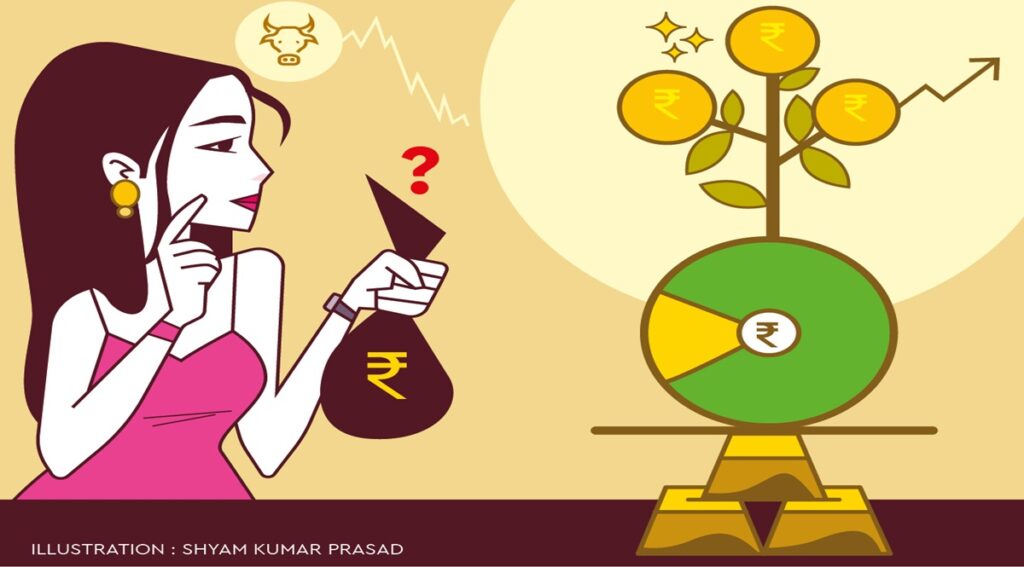Empowering women as a financial literate will have a multiplier-effect on economic & social development, and will lay the foundation for long-term growth, self-reliance and sustainable future of India.
Liberty for a woman comes from the ability to make financial decisions. Mrs. Melinda Gates, a well-known philanthropist, once said, “When money flows into the hands of women, everything changes—families benefit, communities transform, and economies improve.” The governments across the world have been investing in women’s education for a long time, however in spite of progress, we are still far behind when it comes to having a considerable financially literate women population.
According to an annual report 2020-21 of the National Centre for Financial Education (NCFE), promoted by RBI and other financial regulators, India has a literacy rate of nearly 80% of its population, however, only 27% of its people are financially literate and for women, this number is around 21%. Being a financial literate might sound obvious, but in the real world, most people lack understanding & essence about personal finance management.
In simple words, financial literacy is an understanding of how to manage one’s own personal finances and an awareness to make informed financial decisions related to budgeting, spending, investment and debt management. It is usually measured by assessing basic knowledge on fundamental concepts in financial decision making: numeracy (interest), compound interest, inflation, and risk diversification.
A report from Global Financial Literacy Excellence Centre (GFLEC), titled ‘Gender and Financial Literacy -A Global Perspective’, stated “Financial illiteracy is widespread, and individuals lack knowledge of even the most basic economic principles. Low financial knowledge has substantial consequences because it is linked to several other financial decisions. Thus, it is important to know the extent of women’s understanding of basic financial concepts as well as the degree to which financial skills fall short.”
Gender Challenges
Financial challenges for women are different than men. Women’s distinct challenges arise from life expectancies that are longer than men (Indian women are expected to outlive men by a couple of years, according to the Economic Survey 2021-22 tabled in Parliament). Moreover, as per the World Economic Forum’s Global Gender Gap Report 2021, Indian women’ estimated earned income is only one-fifth of men, which puts the country among the bottom 10 globally on this indicator.
It shows that women earn significantly less for the same earning years as men, while they need to save a lot to ensure they meet their long-term needs.
As women are likely to spend at least part of their retirement in widowhood, they have different savings needs than men. Moreover, numerous studies have concluded that women are much less likely to be inclined towards financial planning and, thus, less likely prepared for retirement than men. Hence, lower financial skills combined with limited available resources put women’s financial security at risk.
Additionally, women who are financially dependent on their partners
or family members are vulnerable to financial abuse and exploitation.
Road Ahead…
Women’s economic empowerment, active participation in the financial ecosystem through access to financial services, will help them tear down barriers that keep half the world from leading a fulfilled life.
To address the financial literacy gap among women in the country, there is a need for targeted interventions that address the root causes of the problem. This includes firstly improving access to financial services & promoting financial inclusion, as well as providing financial education and training programs that are tailored to women needs.
Government policies and programs, such as the Pradhan Mantri Jan Dhan Yojana (PMJDY), which provides marginalized individuals access to financial services – savings accounts, credit, and insurance, also play a crucial role in promoting financial inclusion. Since its launch in 2014, PMJDY has benefited over 470 million people, with 66% coming from rural areas. The program has mobilized deposits over ₹175,224 crore and issued over 320 million RuPay debit cards as of January 2023.
Along with government programs, financial literacy should also be part of school curriculum to promote financial education from an early age, especially for girl child to develop basic financial skills that they can build on as they grow older.
Private sector can do their part in resolving this problem by making it a CSR priority and create ways & means for proliferating financial literacy programs & initiatives to create responsible borrowers in wider society. As a responsible consumer lender, Home Credit launched a financial literacy CSR initiative – Saksham in 2022, to impart basic personal finance skills in partnership with a national NGO – Indian Development Foundation, targeting 30,000 marginalised women & girls pan-India.
It is time we fight financial illiteracy, and the most effective strategy would be to work on reducing the widening gender gap in financial literacy in the country. Empowering women as a financial literate will have a multiplier-effect on economic & social development, and will lay the foundation for long-term growth, self-reliance and sustainable future of India.
Article Credits: Financial Express
